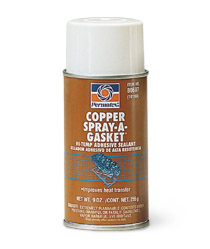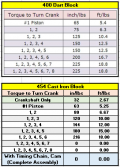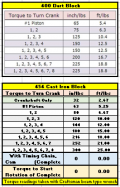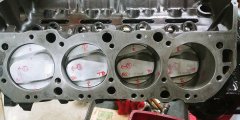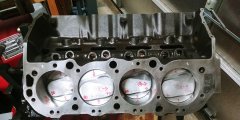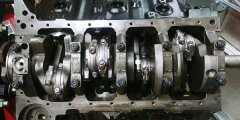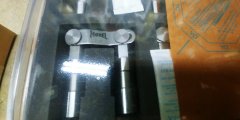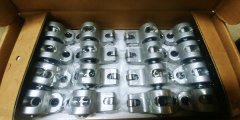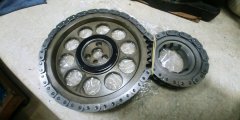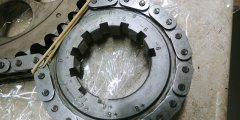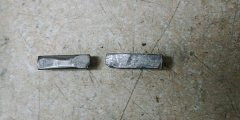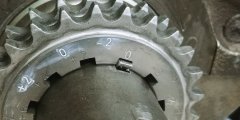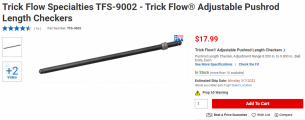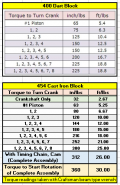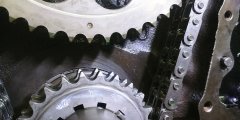Since my post, I went back and looked at the timing gearset installation again. I didn't have red loctite but I had blue loctite so I used that, but I also used these serrated bellville washers under the ARP cam gear bolts. I could not find a locking tab plate. These washers are not Amazon knock-offs, they are Shnorr washers, oem supplier to most of the german car mfg. Excellent long-term quality, I've used them for years. I think that between the loctite, torquing to spec, and using the washers the bolts will stay in place.
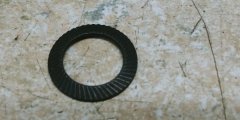 Here's where I could use some additional input on my comments ....
Here's where I could use some additional input on my comments .... 
1. The timing set fit is very snug, the bolts insert through the gear and into the cam no problem, but needs the bolts tightened to fully draw the gear fully onto the cam. I think that is ok. Too loose I think is a bigger issue for a brand new timing set, I anticipate it will very slightly stretch anyway.
2. There appears to be space between the thrust plate retainer bolts and the gearset which of course is good (remember I'm using Gen VI stepnose cam), but I cannot move the cam either backwards or forwards. I think the cam is at its full forward position but if it goes backwards I don't know if this can be an issue with interference. I suspect this is because the new chain is pretty stiff. As mentioned, the assembly turns without any drama. The cam, retainer, retainer bolts and gearset were all supplied by Straub cams so I think if there's an issue they would not be supplied together on the same order. Retainer bolts are torqued to spec with blue loctite and the crank gearset is fully seated, verified by using a proper installation tool. So I believe that the timing set is in its "operating" position and if anything, the roller cam will want to push to the front vs a flat tappet cam.
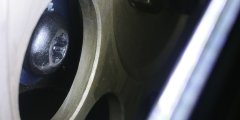
3. Here's a look at a cam lobe with cam gear removed and cam pushed all the way forward against the retainer. Front of engine is to the right. The lobe is not dead center in the lobe. I don't know if this affects anything, my understanding is that the lobes are flat on roller cams. It would seem as long as the lifter rides close to center this would be ok?
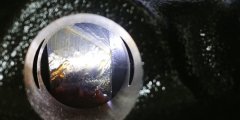
4. Here's a look at the same lobe with the timing set fully installed. Virtually no difference so it's telling me that the timing gear is pulling the cam forward against the retainer. I will again double check that the crank gearset is indeed fully seated, but that should be fairly obvious?
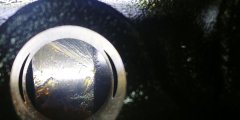
5. This pic verifies that the top gearset is fully seated onto the nose of the cam.

6. This picture is a bit murky, I'm trying to verify the relationship of cam retainer plate, cam, and torrington bearing. I need to examine this more closely. But what seems to be at this point is that the cam is in the full-forward position against the retainer plate and won't push backwards into the block, making me wonder if the bearing is actually even touching the retainer. I know that parts will seat in as the engine is run but I don't have the experience to know if what I'm looking at is ok or not.
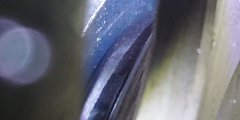
EDIT - I'm adding this to highlight stopping to recheck things. I went back and used the crank gear/balancer installation tool to push against the crank gear again.
Lo and behold the crank gear pushed in a bit further - evidently out of caution I had simply not applied enough pressure to actually fully seat the gear....

Using a straightedge against the top and bottom gears (the actual gear ring, not the face of the gears), the gears are in line and all turns smoothly.
I didn't get a picture yet but the bearing appears to be resting on the retainer plate, a slight difference from what looked like a gap before I re-pressed the crank gear.
The cam lobes appear to be in about the same place vs lifter bores - they didn't really shift backwards.
My reasoning here is that there was tension pulling the cam forward against the retainer. With now ensuring the crank gear is indeed seated, the tension has been reduced and gearsets are aligned.
I believe that this installation is now ok but I still ask about the lobe location within the lifter bore.
